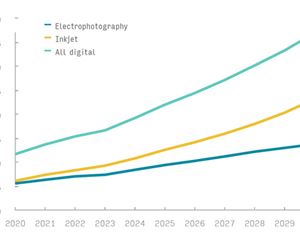Asoke Ghosh: 75 years of book publishing in India
From the PrintWeek archives, the team came across 75 Years of Book Publishing in India, published by the Federation of Indian Publishers and edited by Asoke Ghosh. The book provides a thorough understanding of the development of the Indian publishing industry over 75 years, offering a holistic perspective on its past, present, and future.
20 Jun 2025 | By Jiya Somaiya
Published in 2022, 75 Years of Book Publishing in India examines the dynamic nature of Indian publishing and the unceasing efforts of all those involved to achieve the distinction of ranking second only to the United States in English-language book publishing, and according to Nielsen’s survey, the Indian publishing industry, as of 2022, is ranked as the sixth-largest in the world.
According to the book, over 1,46,000 new novels are published in India each year in 24 different languages. Around 20,000 publications actively perform the task.
Bodour Al Qasimi, former president of the International Publishers Association (IPA), states, “India’s publishing sector is growing at an impressive rate, mirroring the country’s position as one of the world’s fastest-growing economies. It plays a vital role in shaping India’s future by supporting the creation of a knowledge-based society, with a commitment to modern world-class education and life-long learning for its 285 million students.”
Ramesh K Mittal, former president of the Federation of Indian Publishers, asserts, “This story of the journey of Indian publishing is told through articles contributed by renowned writers, thinkers, and publishers, who are experts in their fields and have witnessed the growth, opportunities and challenges in this prestigious occupation over these years.”
The book is divided into two parts: the first examines the publishing scenario in 19 Indian languages, while the second explores four sections: the socio-cultural, technical, and organisational aspects of publishing, as well as the diverse areas of publishing.
In addition to emphasising the necessity of educating the public about the feasibility and extent of copyright in India, the book also underlines the importance of digitalisation and sustainability in the publishing industry to enhance the creative output of the literary space.
With the National Education Policy 2020, there is an increased possibility of opening doors for education in Indian languages. Neeraj Jain, managing director of Scholastic India and chair of the Federation of Indian Chambers of Commerce and Industry (FICCI) in an interview with PrintWeek stated, “Regional language publishing is still growing and contributes a much lower percentage to the overall market size, but with the recent rollout of the new National Education Policy, I believe this will pick up steadily. These days, there’s a lot more buzz around regional language publishing and stories inspired by Indian culture, as opposed to a few years ago. We can expect to see a growth in readership as we address these gaps, learning from the social media experience.”
Asoke Ghosh, the father of Indian publishing and the creator of this publication, had a stellar professional reputation in this field. He was the first Indian and only Asian to be appointed vice president of the IPA. Additionally, he was the chairman and managing director of PHI Learning.
In the early 1960s, he helped bring about revolutionary changes in the publishing landscape of India by facilitating the printing of inexpensive books under the Eastern Economy Editions banner. Furthermore, he was the honorary advisor, former chairperson, and founder of the Indian Reprographic Rights Organisation (IRRO).












 See All
See All